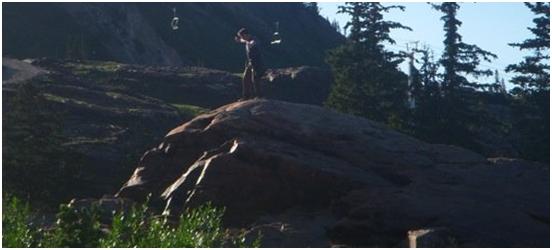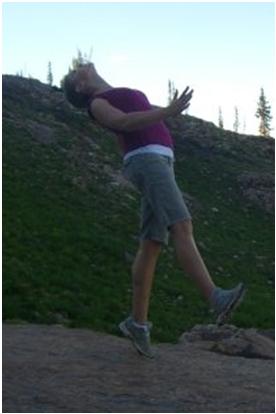Introduction
Dr. Lynnette Overby founded the ArtsBridge Scholars program at the University of Delaware in 2008. ArtsBridge America, originally developed in 1994, is an organization that aims to address the problem of decreasing arts programs within schools by bring arts directly into the classroom.

Dr. Overby advised three scholars in the creation of Creating Landscapes, an interdisciplinary curriculum which incorporates creative dance and fourth grade geography. This past year, the lessons were taught to a fourth grade class at Thurgood Marshall Elementary School in Newark, Delaware.
Research Goals
• Scholars create interdisciplinary lessons using creative and artistic strategies
• Scholars gain knowledge and skills in creating, teaching, and assessing interdisciplinary lessons
• Teachers who do not have arts-related expertise learn to incorporate the arts in their classroom lessons
• Fourth grade students score significantly better than control group in knowledge of geography and dance concepts

Creation of Creating Landscapes
Curriculum: Summer 2008
Dr. Overby and the three ArtsBridge Scholars, Brittany Carson, Heather Silva, and SarahKim Vennard, began the summer by exploring the elements of creative movement. The concept of interdisciplinary education was studied through a number of published works, as well as research of the educational standards, both national and state. The scholars focused mainly on the Delaware standards for fourth grade geography and dance, which would be the two disciplines fused in the Creating Landscapes curriculum.
A summer institute at Thurgood Marshall Elementary school introduced teachers to the concept of interdisciplinary learning through dance. This also allowed the scholars to meet the teachers and establish topics for the lessons. The lessons created would correspond to The Delaware Adventure textbook used by many of the fourth grade classes in Delaware. By the close of the summer, six lessons were developed for the 2008-09 school year. Topics covered include map reading skills, region identification, local indigenous people, and the transportation revolution.
Implementing the Curriculum
The Creating Landscapes lesson plans were taught in Mrs. Karen Frederick’s fourth grade classroom at Thurgood Marshall Elementary School in Newark, Delaware. Julie Luzier came in to replace Brittany Carson on the project, and a new mentor, Mimi Nelson, also became part of the process.
In the Fall semester, the scholars and Dr. Overby gave the experimental class a pre-test to assess their knowledge of the curricular content. This pre-test was also given to a control group: another fourth grade class at the same school. This pre-test was followed by three days in which the elements of creative movement were introduced to the students through a variety of fun and educational activities.

The scholars then took turns preparing and teaching the Creating Landscapes lessons two to three times a week. After the lessons were taught, the students were asked to fill out assessments, both in the form of content-based and self assessments. The lessons were also videotaped for evaluation purposes, allowing the scholars to improve and develop better teaching methodologies.
Results
By the end of the 2008-09 school year, the scholars worked with the students for approximately 20 days. With the teaching of these lessons, the scholars were able to improve their skills, specifically in the areas of time management and effective teacher-student interaction. Currently, the pre- and post-test data is being analyzed, and later this summer, the video footage and qualitative data will be reviewed. The Creating Landscapes lesson plans are also currently being revised by the scholars and their advisors: while many parts of the lessons have proved successful, there are certainly areas for improvement.
In each of the lessons taught, the student subjects have proved successful in the three areas of assessment:
Cognitive
Student understanding of the curricular content is evident through content-assessments and
student feedback.
Affective
Student understanding of how to interact and behave effectively is evident through peer/self-assessments, participation, and observation.
Artistic
Student understanding of how to express ideas accurately and creatively through movement is evident through peer/self-assessments, participation,
and observation
Sample Journal Entry (by Eesha Ahmed)
“My favorite part of this game was that now I can see and draw Delaware really well…I will teach all my friends to learn how to do this. Today was a really fun day. I learned a lot about how Delaware looks.”